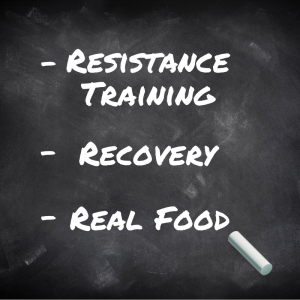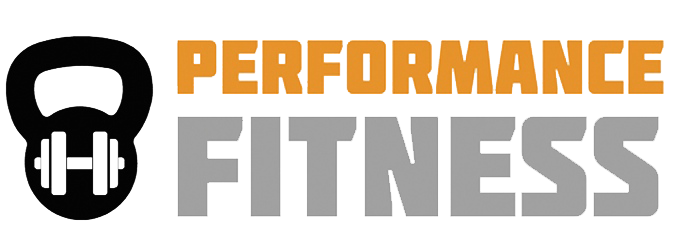It’s Time to Shun the Mainstream Approach to Weight Loss Once and For All
Think about it—back in the day, you “worked up an appetite,” maybe by doing some hard farm labor or going on a long, arduous trek. By the time that physical work was finished, you were famished, more so than usual, bursting with joy to pig out, and pig out you did—with gusto. Yet now we’re told to hit the gym and burn hundreds of calories, and then—and then! Have a salad with a nice, lean chicken breast and some low-calorie dressing. No wonder we find ourselves cheeks-deep in a pint of ice cream at midnight.
The other weight-loss convention, whether or not exercise is involved, is to behave like a fasting monk from sunrise to sundown, essentially “saving your appetite” for a pig-out that you did not plan for, but that inevitably finds you after dinner, in the dark, filled with shame and guilt. No wonder you may conclude, after the umpteenth diet “fail,” that what you really need is a magic food, pill or medical treatment to finally lose the weight.
Isn’t it ironic, to quote Alanis Morrisette, that the conventional approach to weight loss sets us up not only to battle against ourselves, but to lose that battle?
Human beings are not physiologically designed for starvation. We are biologically programmed to survive, which means eating. But we’ve believed the relentless media assault—the success stories, reality shows, weight loss “programs” and articles—and wind up berating ourselves for failing.
Well, we are not the failures. The exercise more/eat less paradigm is the failure.
So what is the solution?
The solution is to get rid of these ridiculous extremes. It’s time to walk the midline.
 What does this mean, the midline? Well, picture a pendulum. At one end of its trajectory we have seven-days-a-week, balls-to-the-wall exercise, coupled with a semi-starvation diet consisting of shirataki noodles, tilapia and steamed spinach. At the other end, there’s Taco Bell, you on your sofa, and a flat-screen TV—constantly blaring, complete with commercials for Red Lobster, KFC, Skittles and Dunkin’ Donuts.
What does this mean, the midline? Well, picture a pendulum. At one end of its trajectory we have seven-days-a-week, balls-to-the-wall exercise, coupled with a semi-starvation diet consisting of shirataki noodles, tilapia and steamed spinach. At the other end, there’s Taco Bell, you on your sofa, and a flat-screen TV—constantly blaring, complete with commercials for Red Lobster, KFC, Skittles and Dunkin’ Donuts.
So what’s in the middle?
In the middle lies the thoughtful, intelligent, effective and sustainable approach to fat loss.
First, you’ll find resistance training, done three to four times a week.
Building muscle boosts your metabolism, protects your bones, improves your posture, and increases your confidence. All of these benefits improve your physique.
Resistance training also requires recovery.
Recovery means sleep. It means waking up refreshed, taking naps when necessary and getting more than the eight recommended hours, if that works better for you. Recovery also can include massage, time spent lounging with friends, self myofascial release with a foam roller or lacrosse ball, and cuddling with your sweetheart. All of these gentle activities keep your hormones balanced, so that no one in your family wants to vote you off the island. Not recovering enough between bouts of strenuous strength training, whether you’re using barbells, kettlebells, or your own body weight will result in injury sooner or later. Live to train another day – and the day after that – by moderating your training volume. It’s really not about puking at the end, no matter what anyone tells you, or what you see on Pinterest.
In the middle is real food. Whole food.
Starting with fat we’ve got full-fat dairy if you tolerate it, nuts, avocados, coconut oil, occasional bacon, pastured chicken fat, and yes—the yolks. When you eat nature’s version of food and not the stripped down, packaged up industrial variety, you are satisfied longer between meals, and during the meal itself. You’re not thinking, while you gnaw on a carrot slathered with fat-free cream cheese that you’d much rather be eating a cheeseburger. Because you can eat the cheeseburger. Just don’t have it on a thick, fluffy, floury bun. Have it on a bed of arugula, with balsamic vinaigrette made with extra virgin olive oil. You will nourish yourself and satisfy your hunger. Then you can go about your day without immediately obsessing about your next meal.
Whole food includes protein at every meal, to satiate you and curb your hunger. Good choices include whey protein in a smoothie, any meat that’s not processed, eggs, Greek yogurt, cottage cheese, and fermented soy products.
 Carbs are welcome as long as they don’t make up the bulk of your plate or bowl, and as long as they are natural and unprocessed. Think “wet” versus “dry” carbs. Wet carbs include potatoes, any and all vegetables, berries, peaches, plums, and grains like oatmeal and rice. Dry carbs are things like crackers, cookies, bread, pasta—anything made with flour, basically. There is very little nutrition in these types of carbs, and they easily lead to binge-eating because they have an addictive quality that makes it hard to know when you’re actually full. If you want to lose weight, learn to live with a tiny amount of them.
Carbs are welcome as long as they don’t make up the bulk of your plate or bowl, and as long as they are natural and unprocessed. Think “wet” versus “dry” carbs. Wet carbs include potatoes, any and all vegetables, berries, peaches, plums, and grains like oatmeal and rice. Dry carbs are things like crackers, cookies, bread, pasta—anything made with flour, basically. There is very little nutrition in these types of carbs, and they easily lead to binge-eating because they have an addictive quality that makes it hard to know when you’re actually full. If you want to lose weight, learn to live with a tiny amount of them.
The midline also includes movement and daily activity like walking, standing, housework, cooking and gardening. You will have the energy for these non-exercise activities that burn extra calories because you’re not killing yourself at the gym every single day. You’re off the couch, away from the TV, breathing deeper than you would if your butt were glued to a sofa cushion, and getting important tasks done.
Creating a sustainable and profound lifestyle change demands focus and determination. But it also demands your mind. It requires intelligence and critical thinking. You want to be able to sustain a healthy lifestyle for the long haul. Constantly waiting for a diet to be over does not fulfill this criterion. Nor does exercising so hard most days of the week that you need to be wiped off the floor, and the only thing you have energy for when it’s over is laying like a sloth, bemoaning your existence.
Don’t be afraid to shun the mainstream, conventional fitness standard in favor of one that actually works with your biology, physiology and psychology. You don’t need magic seeds or berries, supplements, prescription drugs or any kind of medical intervention. With steady, solid determination and by implementing the above, you will achieve your goals and maybe even surpass them in ways you didn’t imagine.
